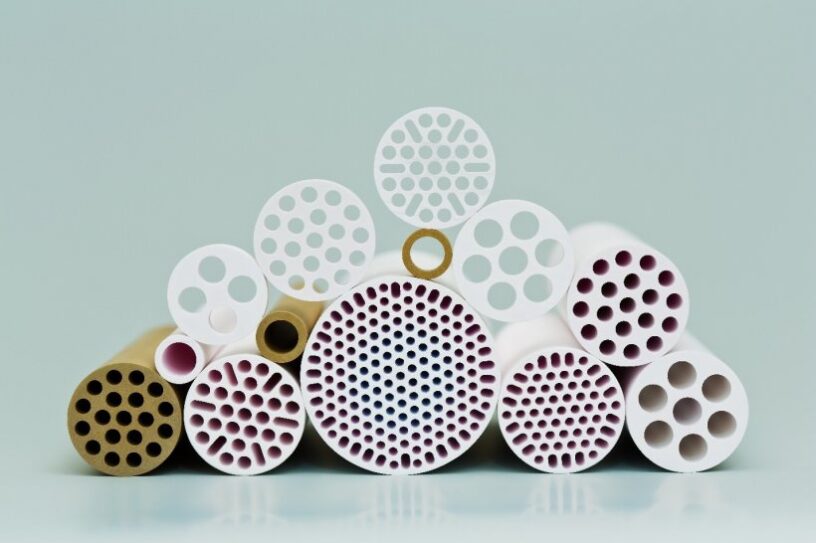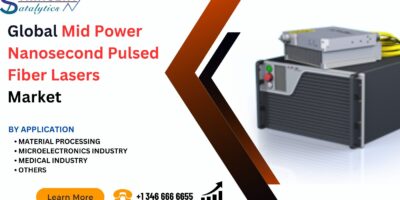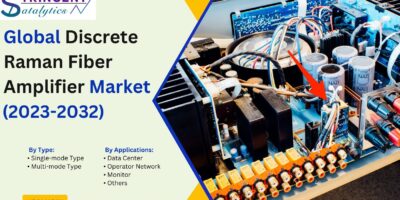The global CMP Membranes market estimated CAGR of 7.89% during the forecast period 2024-2033.
1. Overview
The CMP (Chemical Mechanical Planarization) membranes market is a key component within the semiconductor manufacturing industry. CMP membranes are used in the CMP process to polish and planarize semiconductor wafers, ensuring a flat and smooth surface for subsequent photolithography steps. These membranes provide support and distribute pressure evenly during the polishing process, which is crucial for achieving the required surface finish and thickness uniformity. As semiconductor devices continue to advance, the demand for high-performance CMP membranes has increased, driven by the need for precision in manufacturing increasingly complex and smaller integrated circuits.
2. Market Analysis
2.1. Market Size and Growth
- Current Market Size: The CMP membranes market is growing steadily, with significant demand from semiconductor foundries and manufacturers worldwide.
- Growth Rate: The market is expected to grow at a compound annual growth rate (CAGR) of approximately 5-7% from 2024 to 2030, fueled by advancements in semiconductor technologies and increased production capacities.
2.2. Key Market Segments
- Materials: CMP membranes are made from various materials such as polyurethane, elastomers, and composites, each offering different properties to meet specific polishing requirements.
- Applications: They are used across different semiconductor processes, including wafer polishing, interlayer dielectric (ILD) polishing, and metal polishing.
- Geography: The market is dominated by regions with strong semiconductor manufacturing industries, including Asia-Pacific, North America, and Europe.
2.3. Competitive Landscape
- Major Players: Key players in the CMP membranes market include 3M, DuPont, Entegris, and Cabot Microelectronics.
- Market Strategies: Companies focus on innovation, product differentiation, and strategic partnerships to maintain competitiveness and expand market share.
3. Emerging Technologies
3.1. Advanced Material Technologies
- Nano-Engineered Materials: Development of nano-engineered CMP membranes enhances polishing efficiency, reduces defects, and improves wafer quality.
- Hybrid Materials: Use of hybrid materials combining the benefits of polymers and elastomers for better performance and durability in CMP applications.
3.2. Smart CMP Membranes
- Embedded Sensors: Integration of sensors in CMP membranes for real-time monitoring of pressure, temperature, and wear during the polishing process.
- Adaptive Membranes: Development of adaptive CMP membranes that adjust their properties in response to varying process conditions, improving polishing outcomes.
3.3. Enhanced Surface Coatings
- Low-Friction Coatings: Application of low-friction coatings to CMP membranes reduces wear and particle contamination, enhancing wafer quality.
- Anti-Contamination Coatings: Development of anti-contamination coatings that minimize particle adhesion and reduce the risk of defects.
3.4. Automation and Process Integration
- Automated CMP Systems: Integration of CMP membranes with automated CMP systems for precise control and consistent results in semiconductor fabrication.
- Process Analytics: Use of advanced process analytics and AI to optimize CMP processes based on data from CMP membrane performance.
4. Forecast and Trends
4.1. Market Forecast
- Revenue Projections: The global CMP membranes market is expected to reach a value of approximately $1.2 billion by 2030, driven by increasing demand for high-quality semiconductor wafers.
- Regional Trends: Asia-Pacific will continue to dominate the market due to the presence of major semiconductor foundries, followed by North America and Europe.
4.2. Industry Trends
- Shift to Advanced Nodes: As semiconductor devices move towards smaller process nodes, the demand for high-performance CMP membranes with superior planarization capabilities increases.
- Focus on Defect Reduction: Emphasis on reducing defects and improving yield in semiconductor manufacturing drives the adoption of advanced CMP membranes.
4.3. Technological Trends
- Eco-Friendly Materials: Development of eco-friendly CMP membrane materials that reduce environmental impact and comply with stringent regulatory standards.
- Multi-Layer Membranes: Adoption of multi-layer CMP membranes that offer better control over polishing characteristics and improved durability.
4.4. Consumer Trends
- Customization Demand: Increasing demand for customized CMP membranes tailored to specific process requirements and customer needs.
- Performance Optimization: Focus on optimizing CMP membrane performance to meet the growing complexity and precision requirements of modern semiconductor devices.
5. Investment in CMP Membranes Market
5.1. Capital Investments
- R&D Funding: Significant investments in research and development to innovate and improve CMP membrane technologies.
- Manufacturing Infrastructure: Investments in advanced manufacturing infrastructure to produce high-quality CMP membranes at scale.
5.2. Market Expansion
- Geographical Expansion: Investments aimed at expanding market presence in emerging semiconductor manufacturing regions, particularly in Asia-Pacific.
- Strategic Partnerships: Formation of strategic partnerships with semiconductor equipment manufacturers and foundries to enhance market reach and product development.
5.3. Product Development
- Innovative Solutions: Investments in developing innovative CMP membrane solutions that address emerging challenges and requirements in semiconductor manufacturing.
- Customization Capabilities: Enhancing customization capabilities to offer tailored CMP membrane solutions for specific applications and customer needs.
5.4. Sustainability Initiatives
- Eco-Friendly Production: Investment in eco-friendly production processes and materials to align with sustainability goals and regulatory requirements.
- Recycling Programs: Development of recycling programs for used CMP membranes to reduce environmental impact and promote circular economy practices.
Future Outlook
1. Market Growth
- Positive Outlook: The CMP membranes market is expected to experience positive growth, driven by advancements in semiconductor technologies and increasing demand for high-performance polishing solutions.
- Emerging Applications: Growth opportunities in emerging applications such as 5G, IoT, and advanced computing will drive the demand for CMP membranes.
2. Technological Advancements
- Next-Generation Membranes: Development of next-generation CMP membranes with enhanced capabilities and performance will shape the future of the market.
- Integration with Smart Manufacturing: Integration of CMP membranes with smart manufacturing and Industry 4.0 technologies will enhance process efficiency and control.
3. Industry Trends
- Focus on Precision: Continued focus on precision and defect reduction in semiconductor manufacturing will drive the adoption of advanced CMP membranes.
- Sustainability Goals: Emphasis on sustainability and eco-friendly manufacturing practices will influence the development and adoption of CMP membranes.
4. Challenges and Opportunities
- Technical Challenges: Addressing technical challenges such as material compatibility, wear resistance, and process integration will be crucial for future market growth.
- Opportunities for Innovation: Opportunities for innovation in material science, process control, and automation will drive the development of advanced CMP membrane solutions.
Receive the FREE Sample Report of CMP Membranes Market Research Insights @ https://stringentdatalytics.com/sample-request/cmp-membranes-market/9706/
Market Segmentations:
Global CMP Membranes Market: By Company
• Applied Materials, Inc. (AMAT)
• EBARA
• MOS
• Materials Nano Engineering (MNE)
• Warde Tec
• IV Technologies Co.,Ltd
• Pasco Precision Corp
• Konfoong Materials International (KFMI)
• Jetway Technologies
Global CMP Membranes Market: By Type
• 5-zone, 6-zone and 7-zone
• Below 5-zone (3-zone, etc.)
Global CMP Membranes Market: By Application
• 300mm Membranes
• 200mm Membranes
Regional Analysis of Global CMP Membranes Market
All the regional segmentation has been studied based on recent and future trends, and the market is forecasted throughout the prediction period. The countries covered in the regional analysis of the Global CMP Membranes market report are U.S., Canada, and Mexico in North America, Germany, France, U.K., Russia, Italy, Spain, Turkey, Netherlands, Switzerland, Belgium, and Rest of Europe in Europe, Singapore, Malaysia, Australia, Thailand, Indonesia, Philippines, China, Japan, India, South Korea, Rest of Asia-Pacific (APAC) in the Asia-Pacific (APAC), Saudi Arabia, U.A.E, South Africa, Egypt, Israel, Rest of Middle East and Africa (MEA) as a part of Middle East and Africa (MEA), and Argentina, Brazil, and Rest of South America as part of South America.
Click to Purchase CMP Membranes Market Research Report @ https://stringentdatalytics.com/purchase/cmp-membranes-market/9706/
6. Innovations in CMP Membranes
6.1. High-Durability Membranes
- Enhanced Longevity: Development of CMP membranes with enhanced durability and resistance to wear, reducing the frequency of replacements and maintenance costs.
- Improved Load Distribution: Innovations in membrane design to ensure uniform load distribution across the wafer, improving polishing outcomes.
6.2. Real-Time Monitoring Capabilities
- Embedded Diagnostics: Integration of diagnostic capabilities in CMP membranes for real-time detection of issues such as membrane wear and performance anomalies.
- Predictive Maintenance: Use of predictive maintenance algorithms to anticipate membrane wear and optimize replacement schedules, reducing downtime.
6.3. Advanced Polishing Techniques
- Chemical Additives: Development of CMP membranes compatible with advanced chemical additives that improve polishing efficiency and surface finish.
- Precision Control: Innovations in precision control mechanisms for CMP membranes to achieve ultra-smooth surface finishes on advanced semiconductor devices.
6.4. Sustainable Manufacturing Practices
- Recyclable Materials: Use of recyclable and sustainable materials in the production of CMP membranes to reduce environmental impact.
- Energy-Efficient Production: Adoption of energy-efficient manufacturing processes for CMP membranes to align with sustainability goals in the semiconductor industry.
7. Consumer Demands
7.1. High Performance and Reliability
- Consistency: Demand for CMP membranes that provide consistent performance and reliability across different semiconductor manufacturing processes.
- Precision: Increasing need for high-precision CMP membranes to achieve the exacting requirements of modern semiconductor devices.
7.2. Customization and Flexibility
- Tailored Solutions: Demand for CMP membranes that can be customized to specific process parameters and wafer characteristics.
- Process Adaptability: Flexibility in CMP membrane design to adapt to varying process conditions and material requirements.
7.3. Cost Efficiency
- Competitive Pricing: Demand for cost-effective CMP membrane solutions that do not compromise on performance or quality.
- Reduced Total Cost of Ownership: Emphasis on CMP membranes that offer lower total cost of ownership through enhanced durability and reduced maintenance needs.
8. Benefits of CMP Membranes
8.1. Improved Wafer Quality
- Surface Planarization: CMP membranes play a critical role in achieving smooth and planar surfaces on semiconductor wafers, essential for subsequent photolithography steps.
- Defect Reduction: Effective use of CMP membranes reduces defects such as scratches and pits, improving overall wafer quality and yield.
8.2. Enhanced Process Control
- Uniform Pressure Distribution: CMP membranes ensure uniform pressure distribution across the wafer surface, leading to consistent polishing results.
- Precision Polishing: Advanced CMP membranes provide precise control over polishing parameters, essential for achieving the desired surface finish.
8.3. Increased Productivity
- Efficient Polishing: High-performance CMP membranes enable efficient polishing processes, reducing cycle times and increasing throughput in semiconductor manufacturing.
- Reduced Downtime: Durable and reliable CMP membranes minimize downtime due to maintenance and replacements, enhancing overall productivity.
8.4. Cost Savings
- Extended Lifespan: CMP membranes with enhanced durability reduce the frequency of replacements, lowering operational costs.
- Improved Yield: High-quality CMP membranes contribute to improved yield rates in semiconductor manufacturing, translating to cost savings.
9. Working of CMP Membranes
9.1. Basic Principles
- Polishing Process: CMP membranes support the wafer during the CMP process, where a combination of chemical slurry and mechanical abrasion is used to polish the wafer surface.
- Vacuum Hold: The membrane holds the wafer in place using vacuum suction, ensuring stability and precision during the polishing process.
9.2. Pressure Distribution
- Uniform Application: CMP membranes are designed to distribute pressure uniformly across the wafer surface, ensuring even material removal and avoiding localized over-polishing.
- Adaptive Pressure Control: Advanced CMP membranes incorporate adaptive pressure control mechanisms to adjust pressure based on real-time feedback.
9.3. Material Compatibility
- Chemical Resistance: CMP membranes are made from materials that are compatible with the chemical slurries used in the CMP process, preventing degradation and contamination.
- Thermal Stability: The materials used in CMP membranes provide thermal stability to withstand the temperatures involved in the polishing process.
About Stringent Datalytics
Stringent Datalytics offers both custom and syndicated market research reports. Custom market research reports are tailored to a specific client’s needs and requirements. These reports provide unique insights into a particular industry or market segment and can help businesses make informed decisions about their strategies and operations.
Syndicated market research reports, on the other hand, are pre-existing reports that are available for purchase by multiple clients. These reports are often produced on a regular basis, such as annually or quarterly, and cover a broad range of industries and market segments. Syndicated reports provide clients with insights into industry trends, market sizes, and competitive landscapes. By offering both custom and syndicated reports, Stringent Datalytics can provide clients with a range of market research solutions that can be customized to their specific needs.
Reach US
Stringent Datalytics
+1 346 666 6655
Social Channels:
Linkedin | Facebook | Twitter | YouTube




Leave a Reply